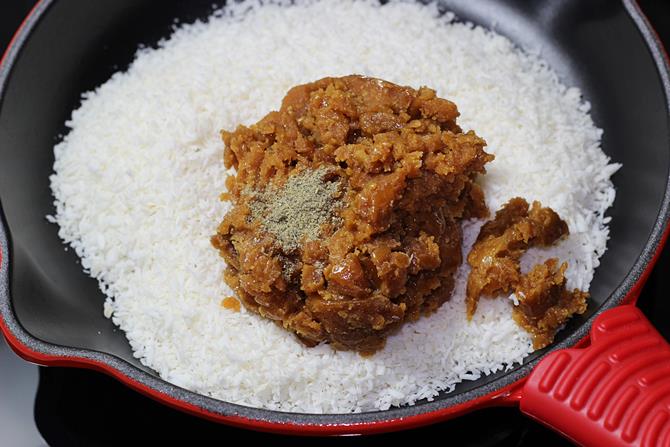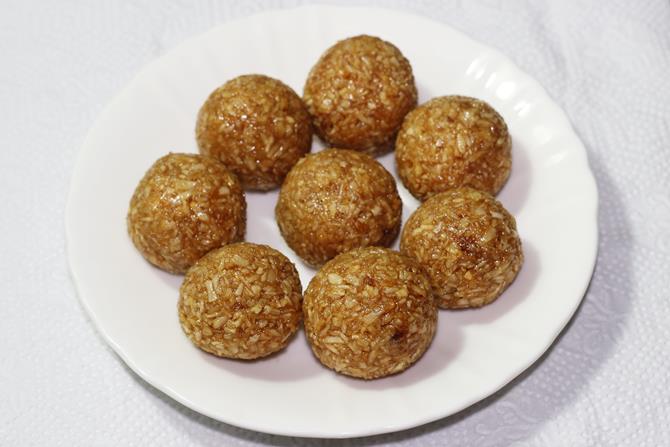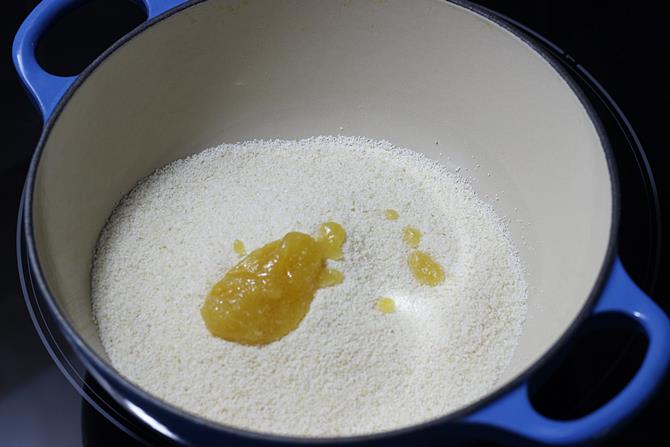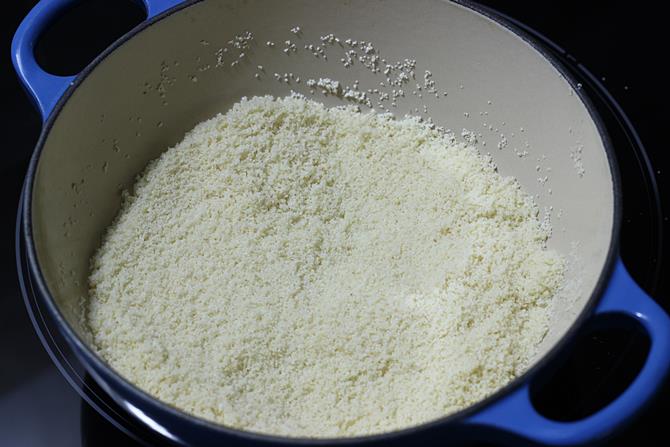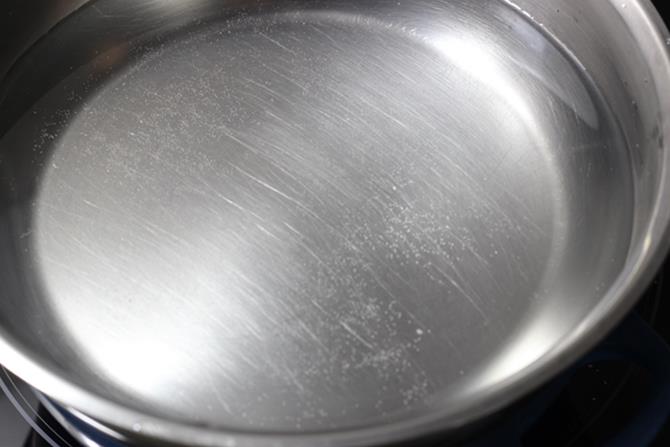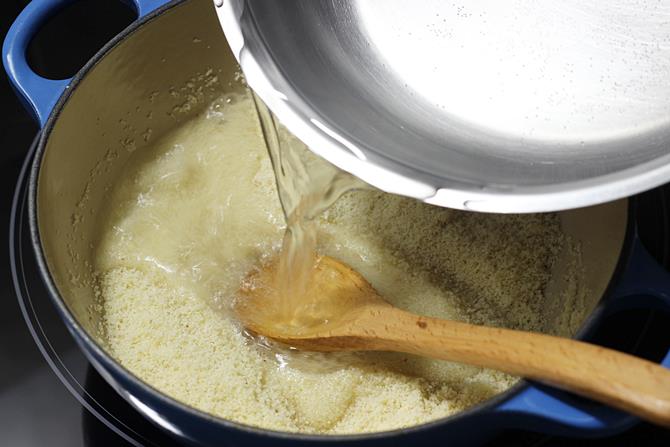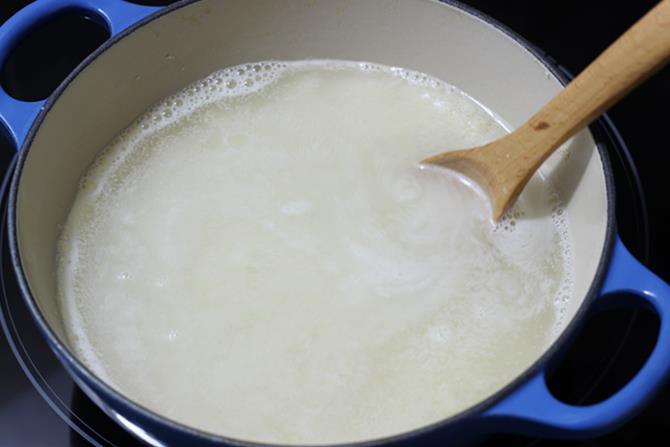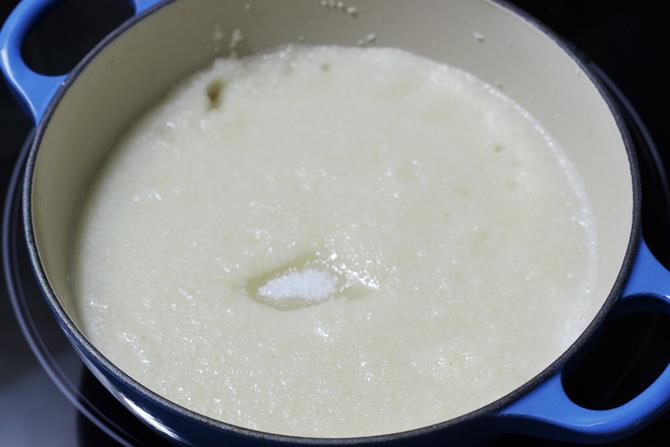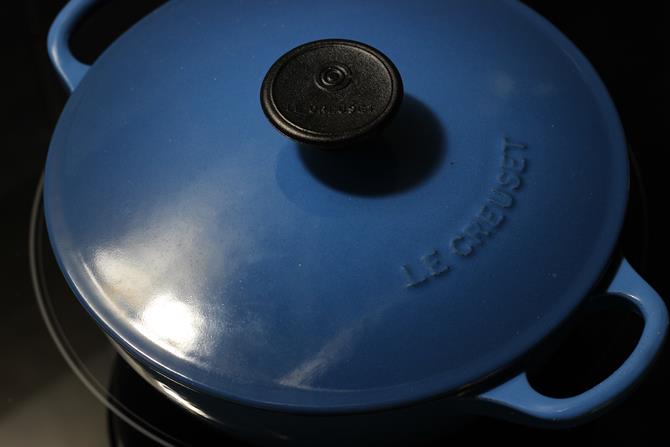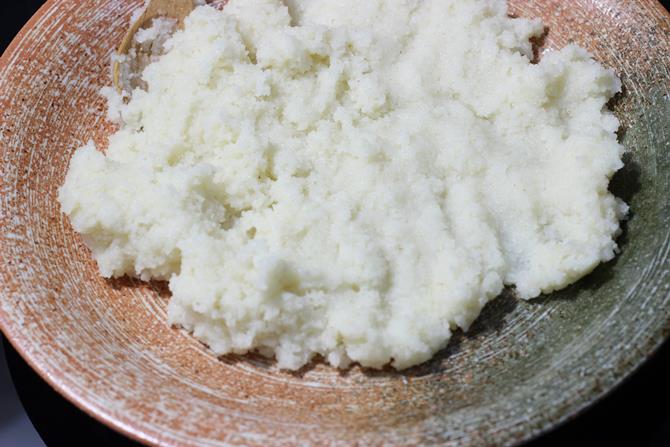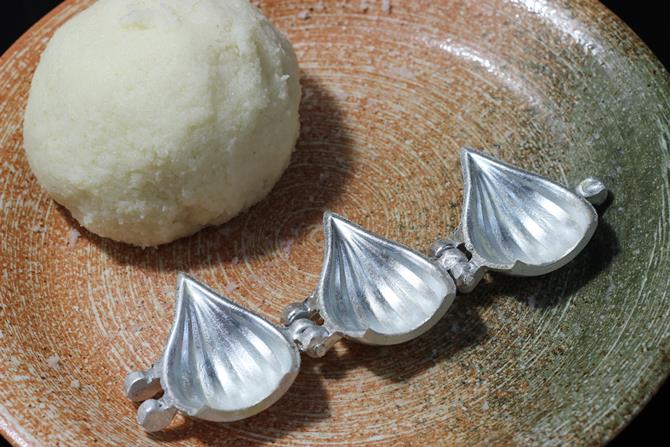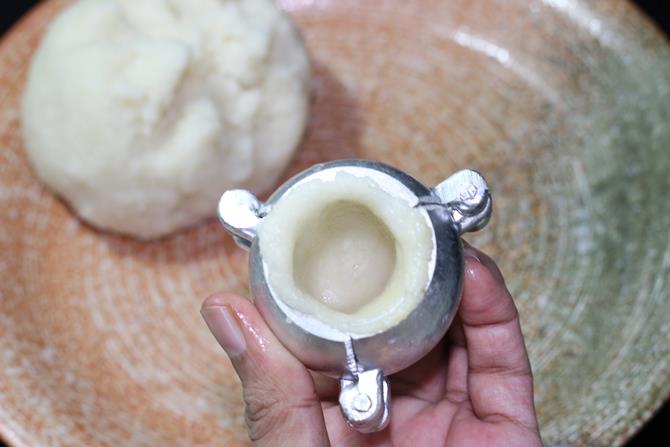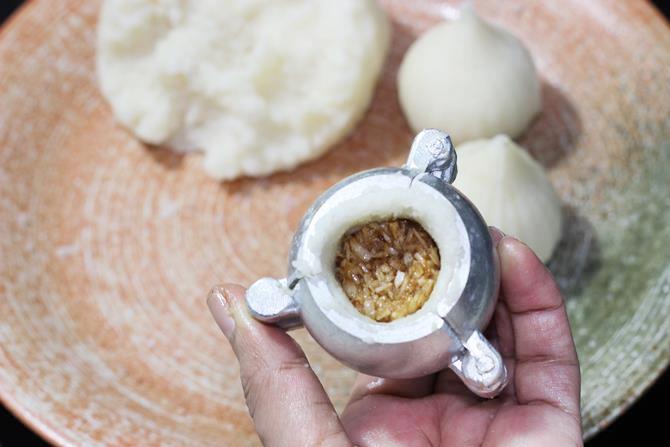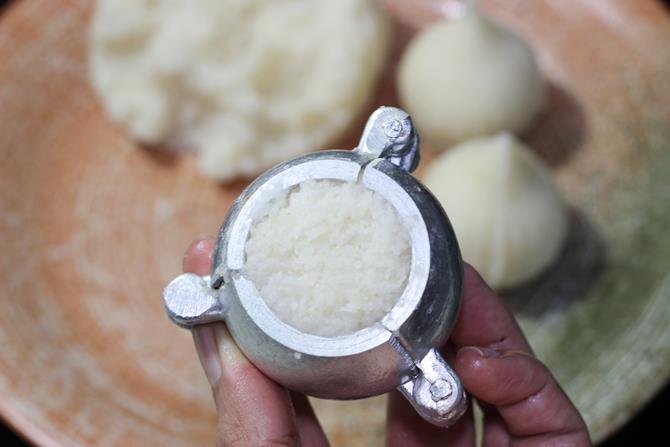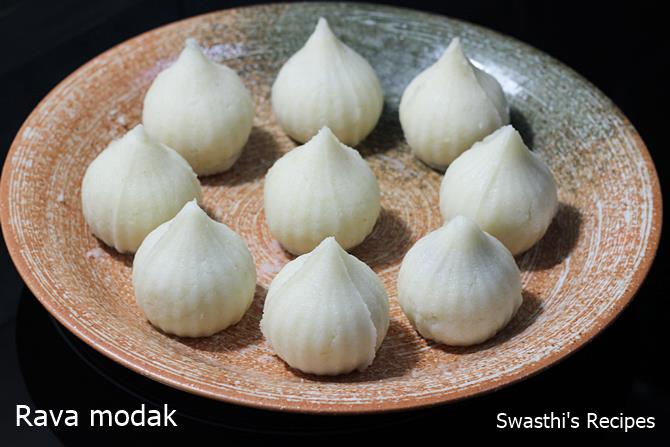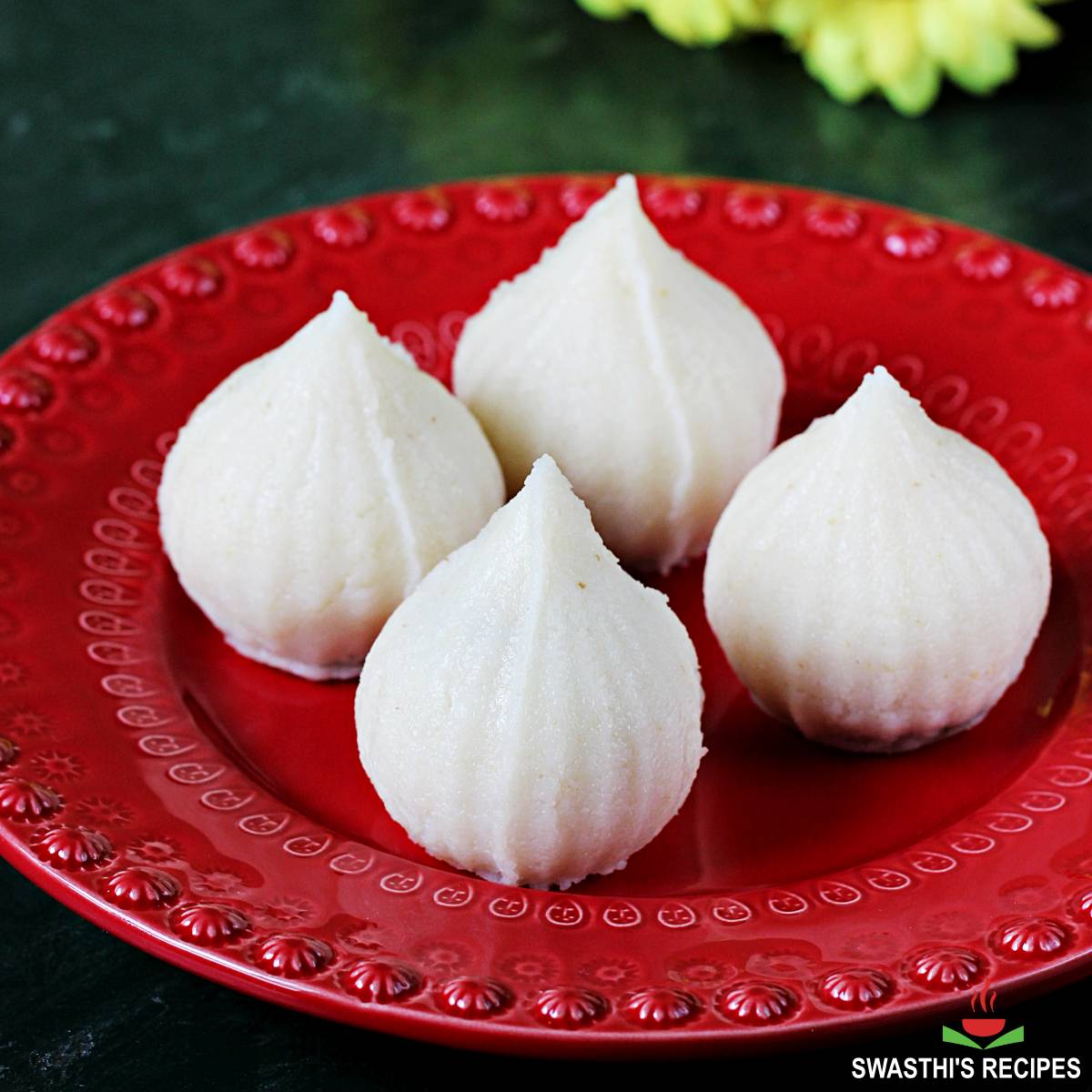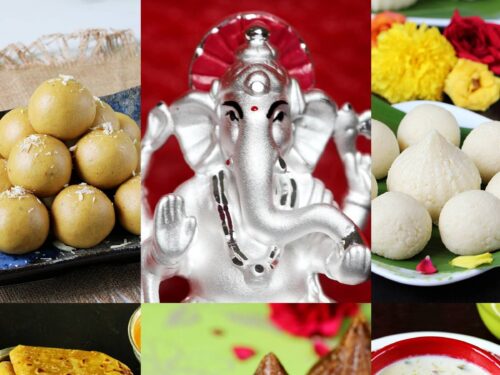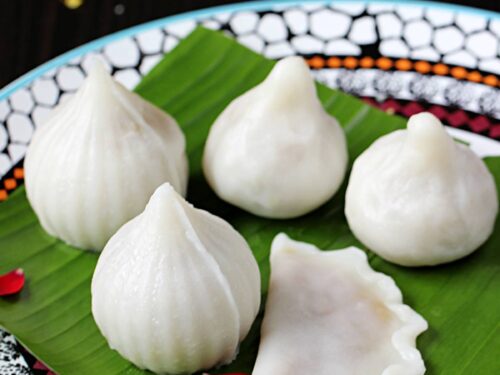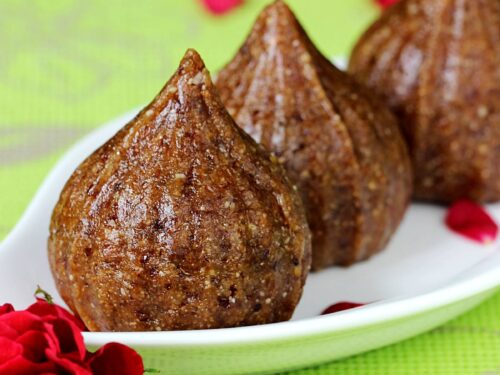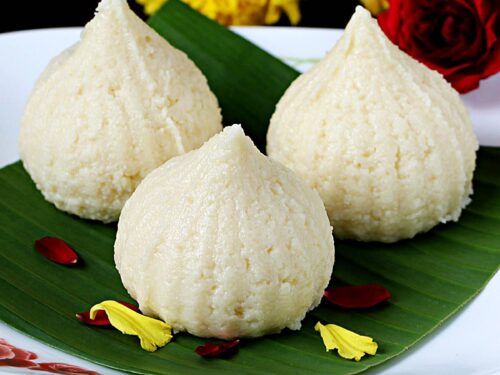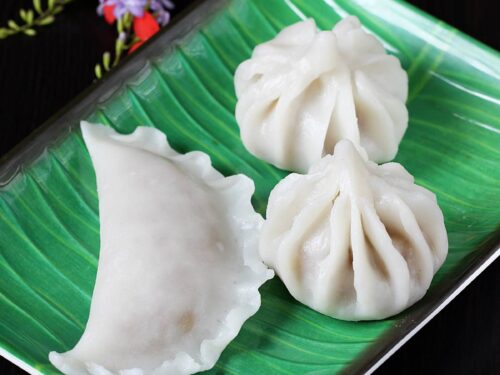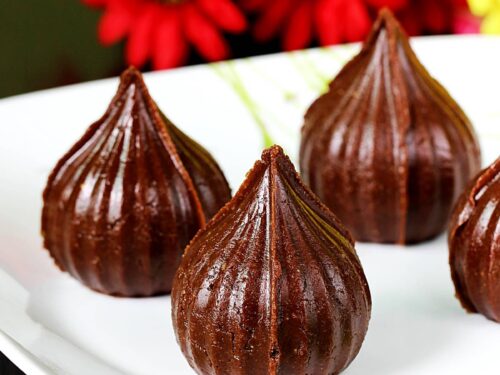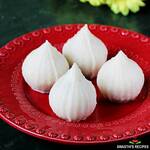The festival is celebrated for 9 days and the first day marks the birthday of God Ganesha. Various kinds of modaks are made in households to offer during the Pooja. While the traditional modak are made with rice flour, the fancy ones can be made with mawa, milk powder, dry fruits, flour and even with semolina.
Rava Modak
Rava modak are sweet dumplings where the outer covering is made with semolina and the stuffing is made with coconut, jaggery and cardamom powder. These are a variation of the traditional ukadiche modak. I have shared 9 different kinds of modaks on the blog. These rava modak are easier than any other recipes I have shared. In the traditional method of making modak, we steam the dough first so it is partially cooked and then we steam the modaks again to finish off which takes considerable amount of time. These rava modak don’t need to be steamed that way since we cook the rava the same way we prepare the sheera. Since the semolina/ suji is fully cooked at the first stage we don’t need to steam the rava modak again. Rava modak turn out to be delicious and are soft as well. For the stuffing, I have shown it with desiccated coconut since I did not make it for an offering. But you can use fresh coconut or use dry fruits stuffing, sesame seeds stuffing, malai stuffing or the chana dal jaggery stuffing. So you can make your own variations with this recipe by choosing one of the stuffings from the list below:Chana dal modak (chana dal poornam)Ellu kozhukattai (sesame seeds poornam)Dry fruits modakMalai modak (paneer stuffing). To shape the rava modak I have used a mould as it makes the job easier. With this recipe you won’t be able to make the pleated modak like I have shown in the steamed Modak post. But if you do not have a mould then follow my kozhukattai recipe to roughly shape them like modak.
How to Make Rava Modak (Stepwise pics)
Prepare Stuffing
- Add 1 cup coconut, ½ cup jaggery / sugar and ½ teaspoon cardamom powder to a pan. I have used clean raw jaggery, so used it directly. If your jaggery has stones or debris, then melt the jaggery first with 2 tbsp of water on a low heat. When the jaggery completely dissolves then filter it and begin to cook. I have also added 2 tbsp water to the pan since I used desiccated coconut which has no moisture to melt the jaggery.
- When you begin to cook, the jaggery should melt and the whole mixture should become moist. If not sprinkle little more water. Stir and cook on a medium to low flame until the mixture thickens. Do not overcook else the mixture may turn hard. You may also get a dry mixture at this stage depending on the kind of jaggery or sugar used.
- Cool this mixture and make 9 to 11 balls depending on the size of your mould.
Make outer covering
- Add 1 ½ tablespoon ghee and then ¾ cup rava to a kadai. Begin to fry on a medium to low heat.
- Semolina begins to emit a good smell when it is roasted. This step makes the covering taste good with a soft and smooth texture. Do not brown the suji and keep stirring continuously until aromatic.
- While the semolina is roasting, bring 1½ to 1¾ cups water to a rolling boil. I have used 1¾ cups water here. You may start with 1½ cups first and then add the rest later if required.
- When the rava smells good, lower the heat. Pour this water slowly. Keep the semolina stirring to prevent lumps.
- Stir to make sure there are no lumps.
- Add a pinch of salt or 1 tsp sugar. We prefer sugar. Also if you prefer you can add more ghee at this stage. I add a bit more.
- Cover and cook on a low heat until the water is absorbed completely and semolina is cooked. Cook for 2 mins to ensure it is well cooked. Remember we are not steaming the rava modak any further so the semolina has to be cooked fully.
- Cool this a bit. When it is still warm, knead the cooked mixture a bit just to make it uniform and sticky.
Shaping
- You should be able to get a nice soft rava ball like seen in the picture. Grease the mould generously with ghee.
- Divide the dough to 9 or 12 portions depending on the size of your mould. Take portions of the mixture and stuff inside the mould. Make a hole in the center.
- Stuff the coconut ball or mixture.
- Seal it up well.
- Open the mould and remove the rava modak to the plate. These need not be steamed as the covering is completely cooked. Offer rava modak to God Ganesha. Related Recipes
Recipe Card
Rava modak recipe first published in September 2016. Updated and republished in September 2021.

